Archaeological evidences and modern researches in the history of Iran show that from 100,000 B.C., various ethnic groups with similar cultures lived on the Iranian Plateau. But very little has been known about these cultures until the Aryan migration about 90,000 years later. Nonetheless, archaeological discoveries have shown that the people, who lived in that area before the Aryans, were people of peace-loving, agricultural, and artistic nature.
In order to make it easier to learn about the history of Iran and to be able to have a brief idea of Iranian history, Iran Safar present this historical information in chronological order.
Introduction to Iran’s History
Linguistically, Iran means the land of Aryans, the eastern branch of Indo-Europeans. A group of Aryans (or Indo-Iranians) who migrated to the Iranian plateau around 2000 BCE from Central Asia, are thought to be the direct ancestors of modern Iranians, This has encouraged many historians to start the history of Iran from the Aryan migrations or the establishment of the first Aryan political power, the Achaemenid Empire. At the same time, it is true that long before the influx of Aryans into Iran, different peoples with established civilizations and kingdoms inhabited the country. These dynasties that deteriorated before the arrival of the Aryans or were defeated by them had an extensive system of international trade and relations with other civilizations of their time, as far west as Egypt and maybe Southern Europe and to China in the east.
Medes
708 – 550 BC
The Medes were an ethnic group of Aryan descent who settled in the western part of the Iranian plateau. The land of the Medes included the western part of the Iranian plateau. The land of Azerbaijan in the northwest of the Iranian plateau was known as Little Media and the rest of the Zagros Mountains region was known as Great Media. The capital of the Medes was ancient Hegmataneh – Present Hamadan. Deioces founded the Median Empire. The exact date of the era of Deioces’ rule is not clear and probably covered most of the first half of the seventh century BC. According to Herodotus, Deioces governed for 53 years.
The Assyrian kingdom, considered the most ruthless power at the time, fell to the Medes. Medes were able to establish the first state in the history of Iran in the late 8th century BC.
The Mede’s government was abolished by Cyrus the Great in around 550 BC, and the Median rule passed to the Persians.
The Achaemenid Persian Empire
550-330 BC
The Achaemenid empire was the largest that the ancient world had seen, extending from Anatolia (current Turkey) and Egypt across western Asia to northern India and Central Asia. The foundation of Achaemenids began in 550 B.C., when King Astyages of Media, who dominated much of Iran and eastern Anatolia, was defeated by his southern neighbor (in a word, his grand son) Cyrus II, a Persia ruler (r. 559–530 B.C.). This upset the balance of power in the Near East. The Lydians of western Anatolia and The Babylonian Empire who controlled Mesopotamia and the eastern Mediterranean territories were later conquered by Cyrus the great.
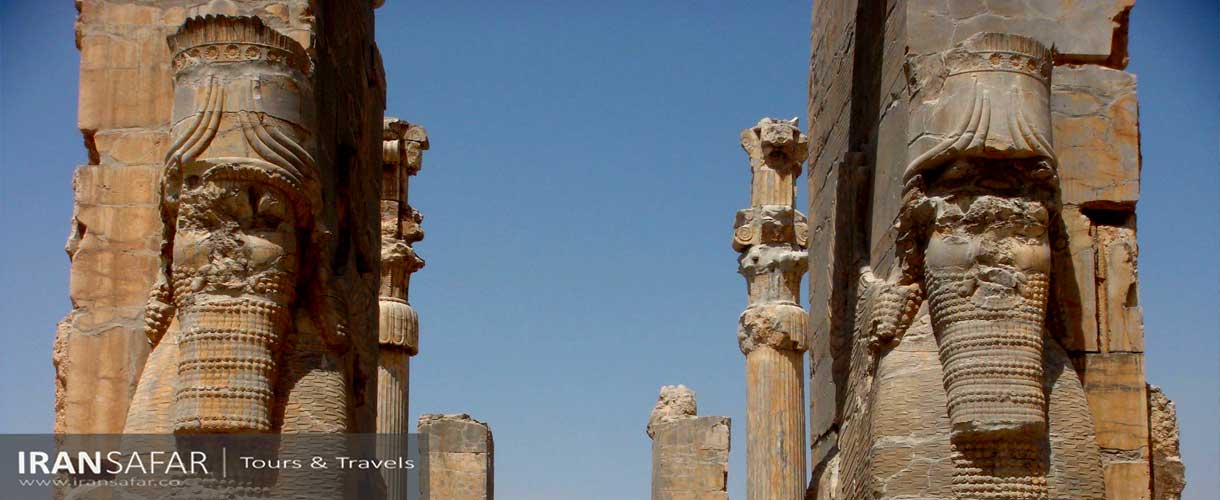 Gate of all nations, Persepolis, Iran
Gate of all nations, Persepolis, Iran
Also Read – Mesopotamia
Seleucid Empire
312 – 63 BC
After Alexander‘s death (323 BC), his conquered regions were divided among his generals, and most of his Asian conquests, of which Iran was the core, reached Seleucus I. Thus Iran came under the rule of the Seleucids (330-250 BC). Seleucids ruled over large parts of western Iran for eighty years, but there was almost no peace in their territory. After a while, the Parthians expanded their influence and finally they were able to destroy the Seleucids.
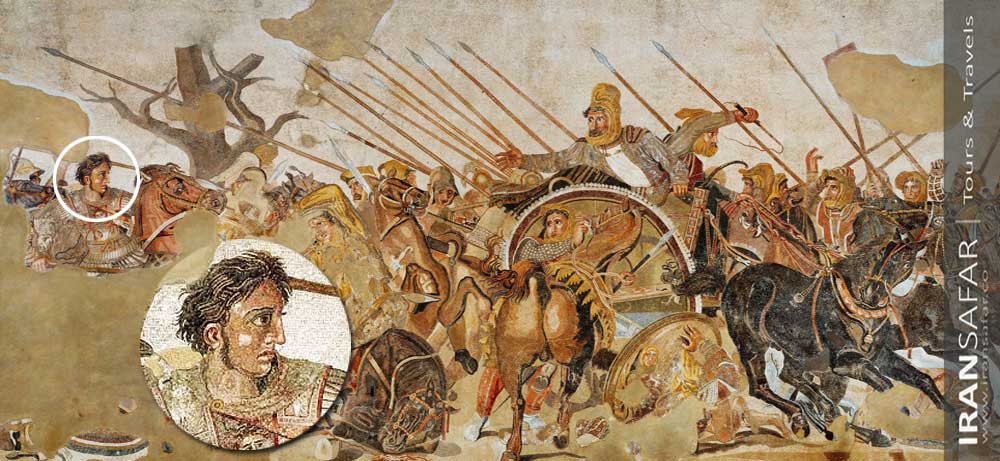 Alexander of Macedonia, in battle against Darius III
Alexander of Macedonia, in battle against Darius III
Having previously served as an infantry general under Alexander the Great, Seleucus I eventually assumed the title of basileus (king) and established the Seleucid Empire. This was of the major powers of the Hellenistic world, which controlled most of Asia Minor, Syria, Mesopotamia, and the Iranian Plateau until overcome by Parthian Empire in Iran and by the Roman Republic in the western territories in the late second and early first centuries BC.
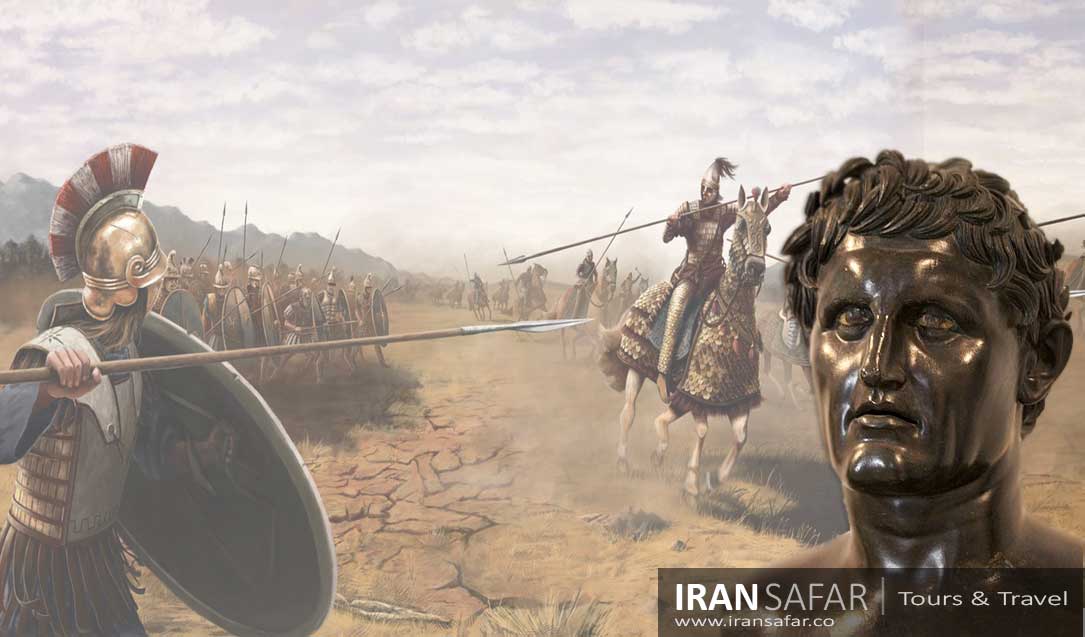
Also Read : Pasargadae Ultimate Guide
Parthian Empire
247 BC – 224 AD
The Parthian Empire, also known as the Arsacid Empire, was one of the most powerful Iranian political and cultural power in the history of Iran, ruling from 247 BC to 224 AD. Its latter name comes from its founder, Arsaces I, who led the Parni tribe in conquering the region of Parthia in Iran’s northeast, then a province under a Seleucid governor called Andragoras, in rebellion against the Seleucid Empire. Later, Mithridates I (r. c. 171–132 BC) expanded the boundaries by seizing Media and Mesopotamia from the Seleucids. At its height, the Parthian Empire stretched from the northern reaches of the Euphrates, in what is now central-eastern Turkey, to present-day Afghanistan and western Pakistan. The empire, located on the Silk Road trade route between the Roman Empire in the Mediterranean Basin and the Han dynasty of China, became a center of trade and commerce.
The Parthians valued the Greek civilization that had emerged in Iran during the Seleucid period. Some Parthian kings were well acquainted with Greek literature, and some Greek games were performed at the court of the Parthian kings. At that time, there was a parliament called Mahestan, which itself consisted of two parliaments, one was the aristocratic parliament and the other was the religious parliament of the Zoroastrian priests, which had a consultative aspect and did not have much influence in affairs.
Sasanian Empire
224–651
The name “Sasanians” is derived from a Persian priest named Sasan, the ancestor of the dynasty. Sasan’s grandson Ardashir I defeated the last Parthian king Artabanus IV in 226. He took Ctesiphon, the capital of the Parthian empire and ended Parthian dynasty, Ardashir accepted the title of “king of kings”, which had until then been used by the Parthian kings and – centuries before – the Achaemenid rulers of Persia.
In the Sasanian rock reliefs (Such as those of Naqsh-e Rostam) and inscriptions, we often see “investiture scenes”, in which the god Ahuramazda, seated on a horse, hands over power to a king. These “Mazda-worshiping kings”, or believers in the supreme god Ahuramazda conferred many privileges to the Magians, the religious specialists of Zoroastrianism, who gained great political power by playing a role in the inauguration ceremony in Ctesiphon, served as judges and tax collectors.
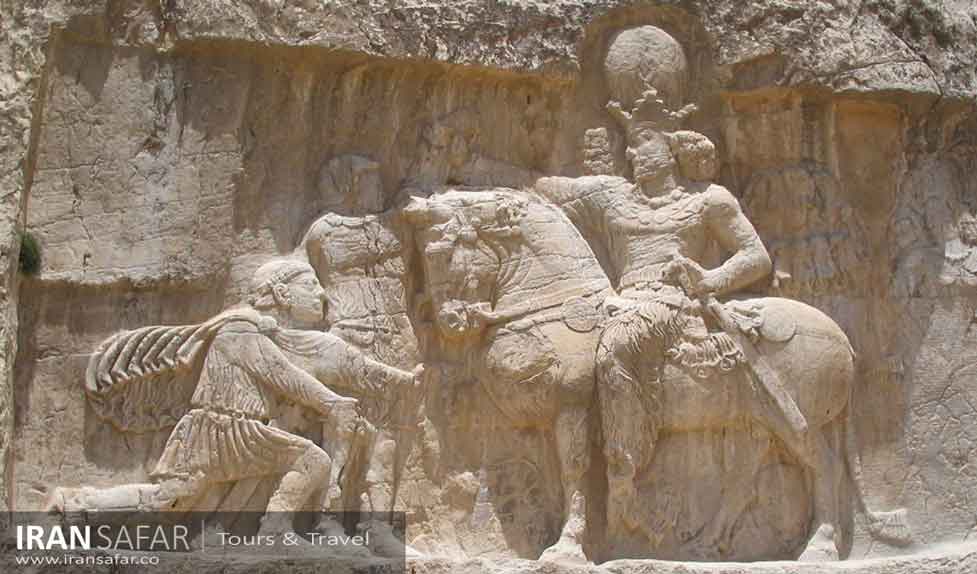 Shapur’s victory over Byzantines, Naqsh-e Rostam
Shapur’s victory over Byzantines, Naqsh-e Rostam
Read More : Sasanian Empire – History, Timeline & Facts
Also Read : Sassanid Archaeological Landscape of Fars
The Arab Rule
After the establishment of Islam in Iran, which occurred as a result of the victory of the Muslim Arabs over the Sassanids and their conquest of Iran, many changes in the social, religious and political spheres took place in the history of Iran.
Muslim domination of Iran was not easy. The cities soon accepted Muslim rule, but the countryside simply did not submit to their rule. The eastern parts of Iran, as well as Tabarestan and Gilan, were later occupied by the Muslims. They had to conquer a place many times.
Dissatisfied with the class discrimination in their country, the Iranians embraced Islam and sought to spread it, but they never hid their opposition to Umayyad and Abbasid rule in Iran, and formed independent movements that formed Governments such as Taherians (881-826 AD) and Saffarids (866-903 AD) can be considered as their results.
Seljuk Empire
1037–1194
The Seljuk Empire (also Seljuqs or Seldjuks) , was a high medieval Turko-Persian Sunni Muslim empire. The Seljuks were a group of nomadic Turkish warriors from the Qiniq branch of Oghuz Turks from central Asia who established themselves in the Middle East during the 11th Century as guardians of the declining Abbasid caliphate. After 1037, they founded the great Seljuk Sultanate; an empire centered in Baghdad and including Iran, َAfghanistan, Iraq, and Syria.
At the time of its greatest extent, the Seljuk Empire controlled a vast area, stretching from western Anatolia and the Levant in the west to the Hindu Kush in the east, and from Central Asia to the Persian Gulf in the south.
The Seljuk empire was founded in 1037 by Tughril (990–1063) and his brother Chaghri (989–1060). From their homelands near the Aral Sea, the Seljuks advanced first into Khorasan and then into mainland Persia, before eventually conquering Baghdad and eastern Anatolia. The Seljuks won the battle of Manzikert in 1071, and then conquered most of the rest of Anatolia, wresting it from the Byzantine Empire. This was one of the impetuses for the First Crusade (1095–1099). The Seljuk empire began to decline in the 1140s, and by 1194 had been supplanted by the Khwarazmian Empire.
Mongol Empire
1206–1368
The Mongol Empire emerged from the unification of several nomadic tribes in the Mongol homeland under the leadership of Genghis Khan (c. 1162–1227), whom a council proclaimed as the ruler of all Mongols in 1206.
Under Genghis Khan, the Mongols first conquered northern China and then the eastern Islamic lands. The empire grew rapidly under his rule and that of his descendants, who sent out invading armies in every direction.
After Genghis Khan died in 1227, this golden dynasty passed to his family.
Timurid Empire
1370-1507
The Timurid Empire, self-designated as “Gurkani”, was a Persianate Turco-Mongol empire comprising modern-day Iran, Uzbekistan, Turkmenistan, Tajikistan, Kazakhstan, the southern region of the Caucasus, Iraq, Kuwait, Afghanistan, much of Central Asia, as well as parts of contemporary Russia, India, Pakistan, Syria and Turkey.
The empire was founded by Timur (also known as Tamerlane), a warlord of Turco-Mongol lineage, who established the empire between 1370 and his death in 1405. Timur acquired the title Gurkan, Mongolian term for ‘royal son-in-law’ because of his marriage to a Genghis Khan’s descendant.
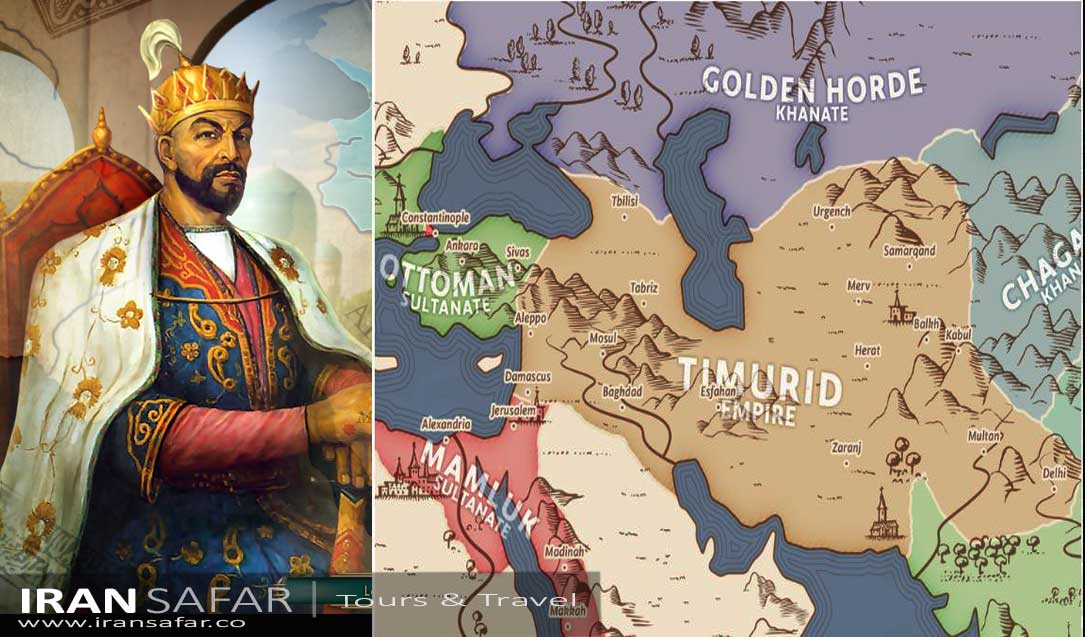 Tamerlane and Timurid territory map
Tamerlane and Timurid territory map
Timur was interested in settled lands of ancient Islamic or Indian culture and eventually built his capital at Samarkand (modern Uzbekistan). His rise to power began in Transoxiana. The later Timurids were mere local rulers in Khurasan and Transoxiana. The Timurid period was one of the most glorious periods in Medieval Islamic art in Transoxiana and Persia. He envisioned himself as the great restorer of the Mongol Empire of Genghis Khan, regarded himself as Genghis’s heir. Timur continued vigorous trade relations with Ming China and the Golden Horde. The empire led to the Timurid Renaissance, particularly during the reign of astronomer and mathematician Ulugh Begh. By 1467, the ruling Timurid dynasty, or Timurids, lost most of Persia to the Aq Qoyunlu confederation. But members of the Timurid dynasty continued to rule smaller states, sometimes known as Timurid emirates, in Central Asia and parts of India. In the 16th century, Babur, a Timurid prince from Ferghana (modern Uzbekistan), invaded Kabulistan (modern Afghanistan) and established a small kingdom there. Twenty years later, he used this kingdom as a staging ground to invade India and establish the Mughal Empire.
Safavid Empire
1501-1736
The Safavid Empire, which was founded as a political dynasty in 1501, was the second Great Islamic Empire to form in Persia. It originated as a religious sect, and it acquired the military and political traits of an empire only after 1501. The Safavid Empire also differed from the Ottoman and Mughal Empires because it was an official Shi’ite empire. religious differences led to much hostility between the Safavids and its Sunni rivals. The Safavid Empire was formed in 1501 and ended by the invasion of Afghans in 1722. It forever influenced Persian nationalism.
Read : Safavid Empire
Qajars
1789-1925
One of the largest families in Iran was called the Qajar family who ruled Iran for about 150 years. The Qajar dynasty was notorious for its incompetence in Iranian history, and the Iranian economy was declining during this period. Agha Mohammad Khan, as the founder of this dynasty, held his coronation ceremony in 1796 in Tehran. The last Qajar king was Ahmad Shah, whose was overthrown in 1304.
In the early 20th century, the Iranian Constitutional Revolution created an elected parliament or Majlis, and sought the establishment of a constitutional monarchy, deposing king Mohammad Ali Shah for Ahmad Shah , but many of the constitutional reforms were reversed by an intervention led by the Russian Empire. Qajar Iran’s territorial integrity was further weakened during the Persian campaign of World War I and the invasion by the Ottoman Empire. Four years after the 1921 coup d’état, Reza Shah took power in 1925 forming Pahlavi Iran.
Agha Mohammad Khan Qajar (1742 – 1797), was the founder of the Qajar Kingdom of Iran. Originally chieftain of the Qoyunlu branch of the Qajar tribe, Agha Mohammad Khan was enthroned as the king of Iran in 1789, and ruled Iran until 1797. He deposed Lotf Ali Khan of the Zand dynasty in 1794.
Agha Mohammad Khan was a eunuch Monarch, being castrated as a young adult upon his capture by Adel Shah Afshar, and hence was childless. He was assassinated on 17 June 1797, and was succeeded by his nephew, Fath-Ali Shah.
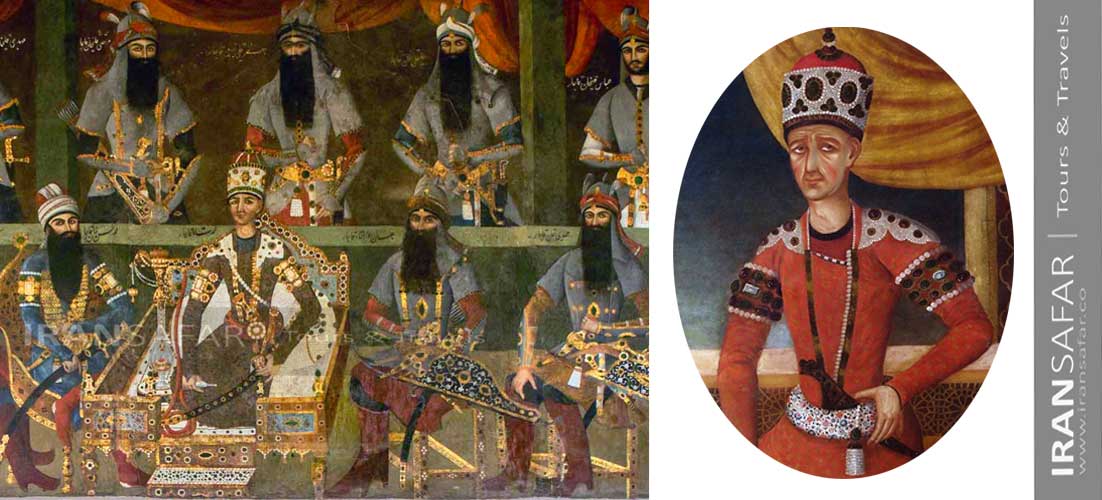 Agha Mohammad Khan (r.1789 – 1797)
Agha Mohammad Khan (r.1789 – 1797)
Agha Mohammad Shah’s reign is important for the return of a centralized and unified government and for relocating the capital to Tehran, where it still stands today. He is also noted for his cruel and aggressive behavior, particularly during the re-subjugation of Georgia. He sacked the capital Tbilisi, massacred many of its inhabitants, and moved some 15,000 Georgian captives to mainland Iran.
Pahlavi Dynasty
1925-1979
The Pahlavi Era in Iran history witnessed a period of change, advancement, war and political unrest. The rule of the Pahlavi dynasty left a lasting impact on the country’s identity. In the 1900s Reza Khan as a commander of the Iranian Army, which he combined with the post of Minister of War, engineered a coup against the Qajars and took control, paving the way for the establishment of the Pahlavi dynasty. The official formation of this dynasty marked a shift away from Iranian governance structures and signaled a new era of centralized power. Reza Shah Pahlavi (r. 1a925 – 1941) set out to modernize Iran and introduced reforms aimed at updating the economy education system and military. However Reza Shah faced challenges along the way due to resistance from internal conservative forces and some external pressures.
During World War II, the Allied forces became concerned when Reza Shah aligned himself with Nazi Germany. In 1941 British and Soviet troops entered Iran to protect the country and ensure that its oil resources did not end up in the hands of the Axis powers. In light of the invasion and domestic opposition Reza Shah was forced to abdicate on September 16 1941, passing the throne to his son, Mohammad Reza Pahlavi. This decision aimed to address the challenges coming from both, within and, outside the country.
Iran’s geopolitical position during this time led to alliances with countries that shaped its foreign policy. The control and utilization of Iran’s oil resources became a focus, in relations influencing the nations economic path.
Timeline of Iran history
B.C.E.
100,000 Evidence of man habitation in Zagros
8000 Development of settled village in Zagros
5500 The oldest settlements in Sialk, Central lran
4200 Susa is founded in southwestern Persia
3200-2700 Proto-Elamite period
2700 Elamite Kingdom with Susa as capital
2700-1600 Old Elamite period
1500-1100 Middle Elamite period
1100-539 Neo-Elamite periods
1000 birth of Zoroaster, Iranian prophet
708 Deioces founds Median Kingdom in Ecbatana
633 Scythian Invasion of Media
624 Medians defeat and oust the Scythians
558 Cyrus the Great moves the capital to Susa
546 Cyrus invades Lydia
539 Cyrus captures Babylon
539 Cyrus allows exiled Jews return to Jerusalem
529 Death of Cyrus the great
525 Cambyses conquers the conquet of Egypt
521 Death of Cambyses, son of Cyrus
521 Darius ascends the throne
514 Darius invades Scythia, Caucasus
494 Invasion of Greece by Darius
490 Defeat of Persians at the Battle of Marathon
486 Death of Darius I, Accession of Xerxes
484 Xerxes suppresses the revolt in Babylon
479 Battle of Plataea, Greek defeat of the Persians
405 The Persian Empire loses Egypt
404 Accession of Artaxerxes II to the throne
359 Accession of Artaxerxes III
342 Egypt is re-conquered
336 Darius III, ascends to the throne
334 Alexander the Great defeats the Persian army
330 Assassination of Darius III
327-326 Alexander invades India
323 Alexander returns to Babylon, and dies at 33
320 Seleucus I (Nicator) founds the Seleucid Empire
247 Arsaces I (Arashk) founds the Parthian dynasty
C.E.
214-17 Birth of the prophet Mani
224 Establishment of the Sasanians by Ardashir I
241 Accession of Shapur I.
259 Emperor Valerianus is defeated by Shapur I.
274 or 277 Execution of Mani.
363 Julian killed in a war against Persia.
376 Peace established between Rome and Persia.
531 Massacre and suppression of the Mazdakites.
531 Administrative, military, and social reforms.
533 Peace with Byzantium.
570 Conquest of Yemen.
570 Birth of the Prophet Moḥammad.
611-16 Ḵosrow II’s conquest of Syria and Egypt.
622 Moḥammad’s move from Mecca to Medina,
632 Death of Prophet Moḥammad.
632-34 Abu Bakr’s caliphate.
633 Yazdegerd III succeeds to the Persian throne.
636 Persians are defeated by Arabs at Qadesiya.
637 Muslims capture Ctesiphon, the Sasanian capital
637 Arab Muslim conquest of Mesopotamia.
642 Defeat of Persians by Muslims at Nehavand.
651 Murder of Yazdegerd III; end of the Sasanians
656 Murder of Othman; Ali is chosen as caliph.
680 Revolt of Ḥusain b. Ali, the third Shiʿite Imam.
680 Death of Hussein at the battle of Karbala.
749 Abu Moslem’s army attacks the Omayyads.
750 Establishment of the Abbasid dynasty.
755 Murder of Abu Moslem by caliph Manṣur.
813 The pro-Persian Maʾmun is elected caliph.
820 Ṭaher establishes the Taherid dynasty.
833 Death of Maʾmun.
878 Mahdi, the twelfth Shiʿism disappears.
903 Rise of the Samanid dynasty.
925 Death of Abu Bakr Moḥammad Rāzi
935 foundation of the Buyid dynasty
940 Death of Rudaki “father of Persian poetry,”
977 Foundation of Ghaznavid dynasty.
999 Ferdowsi completes the first draft of Šāh-nāma.
1019 or 1025 Death of Persian poet, Ferdowsi
1037 Rise of the Saljuqids.
1037 Death of Avicenna, Persian physician.
1078-87 foundation of Ismailis by Ḥasan Ṣabbaḥ
1132 Death of Omar Khayyam
1157 End of Saljuks, rise of the Ḵharazmshahians
1209 Death of Neẓāmi Ganjavi, prominent poet.
1220 Genghis Khan overthrows the Ḵharazmshah
1221 Death of Farid-al-Din Aṭṭar, mystic poet.
1227 Genghis Khan dies
1258 End of the Abbasid caliphate
1271 Marco Polo journeys through Persia
1273 Death of Jalal-al-Din Rumi, poet
1313-93 Mozaffarid dynasty in Yazd and Fars
1370 Timur becomes head of Ulus Chagatai, and begins to develop Samarkand as his capital
1385-6 Timur conquers western Iran; beginning of conflict with his protégé, Tokhtamysh, whom he had helped become Khan of the Golden Horde.
1393 Timur defeats the Mozaffarids
1397 Timur invades India
1405 Death of Timur
1500-06 Overthrow of the Timurids
1501 Esmaʿil I establishes the Safavid dynasty
1502-24 Esmaʿil I establishes Shiʿite official religion.
1507 Portuguese fleet occupies Hormuz.
1508 Safavid forces capture Iraq.
1514 Chaldoan battle;Selim I defeats Esmaʿil.
1514-20 Ottoman economic boycott of Persia.
1548 Ṭahmasb transfers his capital to Qazvin.
1585 Ottomans invade Persia and occupy Tabriz.
1588 Accession of Abbas I (the Great).
1590 Shah Abbas makes peace with the Ottomans.
1598 Shah Abbas’ victory over the Uzbeks.
1600 Shah Abbas transfers his capital to Isfahan.
1601-03 Shah Abbas occupies Bahrain.
1603 War with Ottomans; Abbas retakes Tabriz.
1603-04 deportation of Armenians to New Julfa.
1622 Persians oust the Portuguese from Hormuz.
1629 Death of Shah Abbas I.
1630 The Ottomans capture Hamadan.
1638 The Ottomans capture Erevan and Tabriz.
1664 First Russian mission sent to Isfahan.
1664 A French trade mission is sent to Persia.
1697-1701 The Safavids control Basra.
1722 The Afghans under Maḥmud invade Isfahan.
1722-30 The Afghans occupy much of Persia.
1723 The Russians occupy Rasht and Baku.
1723 Ottomans occupy Georgia and Hamadan.
1724 Maḥmud captures Shiraz.
1725 The Ottomans occupy Ganja and Tabriz.
1729 Nader defeats Afghans.
1733 Nader ends the Ottoman occupation.
1734 Nader invades the Caucasus,Baku, Erevan.
1736 Nader is proclaimed Shah; end of Safavids.
1738 Nader Shah occupies Qandahar.
1739 Nader invades India.
1740 Nader Shah conquers Bukhara and Ḵiva.
1747 Assassination of Nader Shah.
1758 Karim Khan becomes ruler of Persia.
1779 Karim Khan dies at the age of 80.
1783 The Persians are driven from Bahrain.
1789 Aqa Moḥammad Khan establishes Qajar.
1796 Coronation of Aqa Moḥammad Khan.
1797 Assassination of Aqa Moḥammad Khan.
1810 First Persian students are sent to Europe.
1812 Treaty of friendship between Persia and Britain.
1813 First war with Russia; Abbas Mirza is defeated.
1813 Treaty of Golestan; Persia cedes Georgia.
1826 Second war with Russia; defeat of Persians.
1826 Turkmenchay treaty with Russia.
1836 Rebellion of Aqa Khan against government.
1844 Foundation of Babi movement.
1848 Accession of Nāṣer-al-Din Shah.
1850 Execution of the Bab by order of Amir Kabir.
1850 Amir Kabir is exiled to Kashan.
1851 Inauguration of the Dār-al-Fonun College.
1852 Execution of Amir Kabir iby Naṣer-al-Din Shah.
1852 Massacre of the Babis by Naṣer-al-Din Shah.
1857 Shah recognizes independence of Afghanistan.
1860 Freemasonry is introduced in Persia.
1891 tobacco boycott by Mirzā Ḥasan Shirzi.
1892 Death of Baha Allah, founder of the Bahāis.
1896 Assassination of Nāṣer-al-Din Shah.
1904 Tea plant seed is imported from India.
1906 First formation of a national assembly.
1906 The first Majles opens on October 7.
1908 Excavation of oil at Masjed-e Solayman.
1908 movement of Sattar Khan and Baqer Khan.
1909 Execution of Shaikh Fażl-Allāh Nuri.
1909 Formation of the Anglo-Persian Oil Company..
1915 Movement of Mirza Kuchak Khan in Gilan.
1915 British forces enter Bushehr.
1916 Russian forces occupy Qom and Kashan.
1920 Mirza Kuchak Khan occupies Rasht.
1921 Reza Khan defeats Kuchak Khan.
1921 Founding of the Qom religious center.
1923 Reza Khan assumes the premiership.
1923 Aḥmad Shah leaves for Europe,
1925 Parliament approves the deposing of Aḥmad Shah.
1925 Reza Khan is elected Shah.
1928 Formation of Bank-e Melli (National Bank).
1928 Bandar-e Anzali is renamed Bandar-e Pahlavi.
1930 Political relations established with Japan.
1934 Reza Shah visits Turkey and Kemal Ataturk.
1935 Inauguration of the University of Tehran.
1935 Adoption of Western-style uniform dress
1935 Uprising in the Gowharshad Mosque.
1936 Women are banned from wearing veil (chador).
1939 Prince Moḥammad Reza marries Fawzia.
1939 Iran declares its neutrality in the World War II.
1941 Reza Shah is overthrown
1943 Tehran Conference.
1944 Death of Reza Shah in Johannesburg.
1948 The Shah and Queen Fawzia divorce.
1950 Military agreement between Iran and US.
1951 Shah marries Sorayya Esfandiari.
1951 The Oil Nationalization Law is passed.
1951 Moṣaddeq is named prime minister.
1952 Moḥammad Moṣaddeq resigns.
1953 Dismission of Mosaddegh by Shah.
1957 Formation of SAVAK, Iranian secret police.
1959 The Shah marries Farah Diba.
1960 Inauguration of the Central Bank of Iran.
1962 Inauguration of Iran Air, the national airline.
1962 Formation of the Iran National Car Company.
1964 Ayatollah Khomeini is exiled to Turkey.
1966 National Iranian television begins broadcasting.
1967 Death of Moḥammad Moṣaddeq.
1971 Iran occupies Abu Musa Island.
1971 Celebrations of 2,500th anniversary of foundation of the Persian monarchy
1972 President Richard Nixon visits Iran.
1979 Islamic revolution

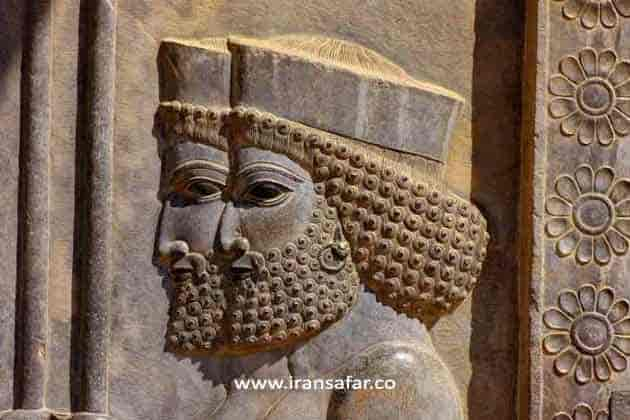

cyrus and darius the great always live in our hearts <3
This was very useful! Thank You 🙂